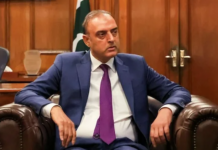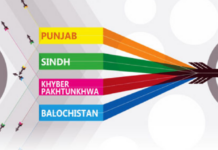The fiscal performance of both the federal and provincial governments for the first nine months of the fiscal year largely met the targets set under Pakistan’s $7 billion bailout package from the International Monetary Fund (IMF).
According to a report released by the Ministry of Finance, the federal government exceeded its primary surplus target by Rs 800 billion, reporting a surplus of Rs 3.5 trillion (2.8% of GDP), against a target of Rs 2.7 trillion. This surplus was largely due to the early booking of the central bank’s annual profit, which amounted to Rs 2.5 trillion.
At the provincial level, the four provinces collectively generated a cash surplus of Rs 1.028 trillion, exceeding the IMF target by Rs 25 billion.
The provinces also surpassed their tax revenue targets, collectively generating Rs 685 billion, Rs 79 billion above the target. The strong performance was driven by Sindh, Khyber Pakhtunkhwa (K-P), and Balochistan, with their tax and non-tax revenue collections performing well.
Despite these successes, the Federal Board of Revenue (FBR) fell short of its revenue targets. The FBR missed two key conditions, failing to collect Rs 9.17 trillion in total revenues, instead pooling Rs 8.5 trillion, a shortfall of Rs 715 billion. It also missed its target of collecting Rs 36.7 billion from retailers under the Tajir Dost scheme, which remained largely uncollected.
The report showed that non-tax revenues performed better than expected, largely due to increased petroleum levy collections, which reached Rs 834 billion, up from Rs 720 billion in the previous fiscal year. The federal government’s total non-tax revenues amounted to over Rs 4 trillion, exceeding the target by Rs 71 billion.
The provinces’ fiscal flexibility, bolstered by increased revenues under the National Finance Commission (NFC) award, allowed them to generate Rs 6.1 trillion in total revenue. Of this, Rs 5.1 trillion came from their share of federal taxes. While provinces like Sindh, K-P, and Balochistan showed strong revenue performance, Punjab experienced a statistical discrepancy of Rs 117 billion due to below-the-line expenditures for wheat debt retirement.
On the expenditure side, the federal government spent Rs 11.5 trillion during the first nine months, an increase of 19% compared to last year, primarily due to rising interest payments. Interest costs amounted to Rs 6.4 trillion, up Rs 921 billion from the previous year, while defence spending also increased by 16.5%, totaling Rs 1.42 trillion.
The federal government’s net income after distributing the provincial share stood at Rs 7.5 trillion, falling short by Rs 394 billion compared to its needs for interest payments and defence spending.
Despite some overspending in certain areas, the Finance Ministry reported that primary current expenditures remained within target, with actual spending of Rs 4.3 trillion against a target of Rs 5.2 trillion. However, development expenditures were significantly below the target, with only Rs 309 billion spent out of a planned Rs 658 billion.























